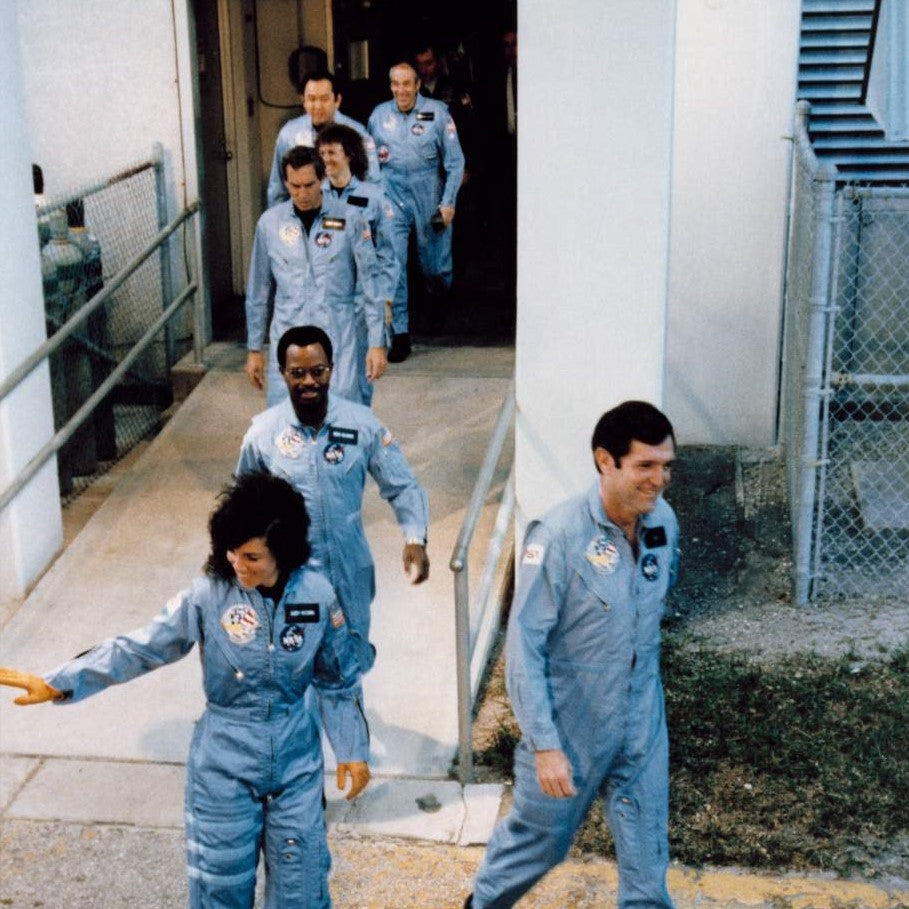
Today we remember the seven crew members who lost their lives during the devastating Challenger disaster on this day in 1986. The space shuttle undertaking the 25th mission appointed STS-51-L shockingly broke apart over the Atlantic Ocean 73-seconds after liftoff at 11:39 a.m. EST. The intended goal of the mission was to launch the second Tracking and Data Relay Satellite, or TDRS-B.
On board the shuttle were Mission Commander Dick Scoobee, pilot Michael Smith, astronauts Gregory Jarvis, Judith Resnik, Ronald McNair and Ellison Onizuka, and civilian school teacher Christa McAuliffe, who was chosen through the "Teacher in Space" program. Side note: McAuliffe's backup, Barbara Morgan, did eventually make it into orbit in 2007 aboard the space shuttle Endeavor.

The crew of Space Shuttle mission STS-51-L pose for their official portrait on November 15, 1985. In the back row from left to right: Ellison S. Onizuka, Sharon Christa McAuliffe, Greg Jarvis, and Judy Resnik. In the front row from left to right: Michael J. Smith, Dick Scobee, and Ron McNair.
It was later determined that the cause of the calamity was faulty O-ring seals that were not designed to handle the January temperatures and conditions for the launch. The incident resulted in a 32-month hiatus in the shuttle program while an extensive investigation was conducted by the Rogers Commission, a special unit that was assembled by the United States President Ronald Reagan.
Apparently during the investigation, it was established that there was a performance pressure called "launch fever" at the time; in which NASA was supposed to push out a certain number of launches faster than was ultimately safe, causing some of the imperative decision-making folks within the organization to violate their own safety rules.
Some believe that the timing of the Challenger launch was rushed in order to align with President Reagan's State of the Union Address that was scheduled for later that day; and furthermore, after digging deeper within the investigation, it was found that certain NASA managers had known since 1977 that the design of the O-rings were flawed, but their negligence led to the untimely deaths of the Challenger crew almost a decade later.

The Challenger event was certainly a catastrophe that shook the world; however, it also initiated a very important safety overhaul of the space program with numerous changes that took nearly three years to implement. It wasn't until September 29, 1988 that the orbiter Discovery took flight and the program was back up and running again.
Another positive outcome of a very sad situation was the formation of the Challenger Center for Space Science Education, a non-profit that was established by family members of the fallen crew. The intention of the program is to get children excited about science, technology and math by providing hands-on experiences, and it has influenced the lives of nearly 5 million kiddos over the last 30-ish years.
Casualties of space exploration are inevitable; however, this doesn't make them any less sorrowful. As someone who could never do what astronauts dedicate their lives to, I salute anyone who willingly launches themselves into the great beyond in order to better mankind. Thank you for your service.
xo
B
B

